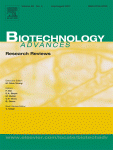Summary: Electrochemical (EC) sensing approaches have exploited the use of carbon nanotubes (CNTs) as electrode materials owing to their unique structures and properties to provide strong electrocatalytic activity with minimal surface fouling. Nanofabrication and device integration technologies have emerged along with significant advances in the synthesis, purification, conjugation and biofunctionalization of CNTs. Such combined efforts have contributed towards the rapid development of CNT-based sensors for a plethora of important analytes with improved detection sensitivity and selectivity. The use of CNTs opens an opportunity for the direct electron transfer between the enzyme and the active electrode area. Of particular interest are also excellent electrocatalytic activities of CNTs on the redox reaction of hydrogen peroxide and nicotinamide adenine dinucleotide, two major by-products of enzymatic reactions. This excellent electrocatalysis holds a promising future for the simple design and implementation of on-site biosensors for oxidases and dehydrogenases with enhanced selectivity. To date, the use of an anti-interference layer or an artificial electron mediator is critically needed to circumvent unwanted endogenous electroactive species. Such interfering species are effectively suppressed by using CNT based electrodes since the oxidation of NADH, thiols, hydrogen peroxide, etc. by CNTs can be performed at low potentials. Nevertheless, the major future challenges for the development of CNT-EC sensors include miniaturization, optimization and simplification of the procedure for fabricating CNT based electrodes with minimal non-specific binding, high sensitivity and rapid response followed by their extensive validation using “real world” samples. A high resistance to electrode fouling and selectivity are the two key pending issues for the application of CNT-based biosensors in clinical chemistry, food quality and control, waste water treatment and bioprocessing.
Advances in Carbon Nanotube Based Electrochemical Sensors for Bioanalytical Applications
